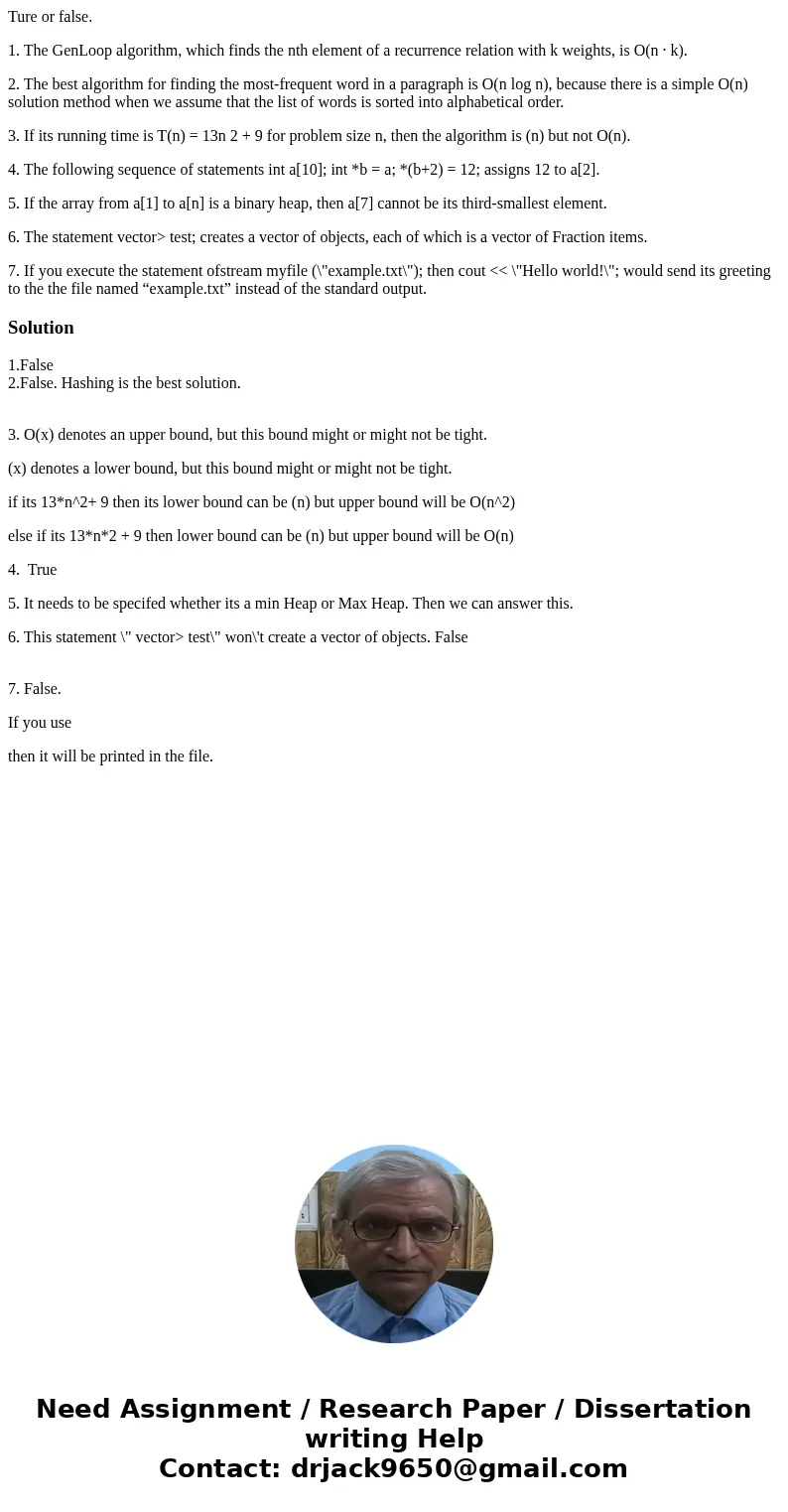Ture or false 1 The GenLoop algorithm which finds the nth el
Ture or false.
1. The GenLoop algorithm, which finds the nth element of a recurrence relation with k weights, is O(n · k).
2. The best algorithm for finding the most-frequent word in a paragraph is O(n log n), because there is a simple O(n) solution method when we assume that the list of words is sorted into alphabetical order.
3. If its running time is T(n) = 13n 2 + 9 for problem size n, then the algorithm is (n) but not O(n).
4. The following sequence of statements int a[10]; int *b = a; *(b+2) = 12; assigns 12 to a[2].
5. If the array from a[1] to a[n] is a binary heap, then a[7] cannot be its third-smallest element.
6. The statement vector> test; creates a vector of objects, each of which is a vector of Fraction items.
7. If you execute the statement ofstream myfile (\"example.txt\"); then cout << \"Hello world!\"; would send its greeting to the the file named “example.txt” instead of the standard output.
Solution
1.False
2.False. Hashing is the best solution.
3. O(x) denotes an upper bound, but this bound might or might not be tight.
(x) denotes a lower bound, but this bound might or might not be tight.
if its 13*n^2+ 9 then its lower bound can be (n) but upper bound will be O(n^2)
else if its 13*n*2 + 9 then lower bound can be (n) but upper bound will be O(n)
4. True
5. It needs to be specifed whether its a min Heap or Max Heap. Then we can answer this.
6. This statement \" vector> test\" won\'t create a vector of objects. False
7. False.
If you use
then it will be printed in the file.

 Homework Sourse
Homework Sourse